budgaugh/iStock/GettyImages
Panko, which literally translates to "bread flour" or "bread powder," is a term used to describe a certain types of breadcrumbs.This Japanese staple has a lighter, more airy texture than regular breadcrumbs, resulting in extra crispy and crunchy foods. You can find panko in the international foods section at most large grocery stores or at specialty Asian markets.
Origins
Panko comes to us by way of Japan, where it is most commonly used a coating for fried foods. In Japan, fried foods are often served at room temperature, so a light, crispy coating is necessary to prevent your lunch from turning into a soggy, greasy mess. The Japanese first learned to make bread from the Portuguese. In fact, the word panko is actually derived from the Portuguese word for bread, pão, combined with the Japanese suffix -ko, which means flour or powder. Panko began popping up stateside in traditional Japanese dishes like tempura and tonkatsu, a deep-fried pork cutlet. American cooks, however, have embraced the crispy crumb in a diverse array of dishes.
Preparation
Panko is made from wheat bread just like most other breadcrumbs, but it achieves its superior texture during the grinding process. Instead of being ground like normal breadcrumbs, panko is shredded, giving it a coarse, uneven texture with a larger surface area. Up close, panko more closely resembles irregular shards than crumbs. It's this unusual texture that makes panko so airy and crispy. Panko is available in two varieties: white, which is made from bread without crusts and tan, which is made from the entire loaf.
Benefits
Panko's irregular shape is the source of its extra-flaky texture. Unlike regular breadcrumbs, panko doesn't compact, leaving foods airy and crispy instead of dense. It also absorbs less oil than regular breadcrumbs, preventing fried foods from becoming greasy or soggy. Less absorbed oil also means that your foods will stay crunchy longer, even at room temperature.
Uses
You can use panko in most instances that you would use regular breadcrumbs. Dredge meat or eggplant cutlets in panko before frying them. Use panko as a binding agent in meatballs, meatloaf, veggie burgers or crab cakes. Sprinkle it on top of macaroni and cheese or casseroles before baking for a crunchy topping; just be sure to drizzle melted butter or oil over the panko-crusted casserole to ensure it browns nicely. Use panko to add an unexpected crunchy texture to dips. Panko also works great as a salad topping in place of croutons.
Related Articles
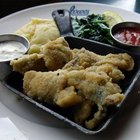
How to Use Panko
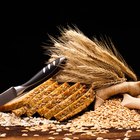
How to Replace Saltine Crackers for ...
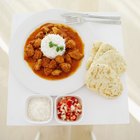
What Is Indian Flat Bread Called?

Frying With Flour, Eggs and Bread Crumbs
How to Substitute Quinoa for Breadcrumbs

What to Do With Pizza Dough When You're ...
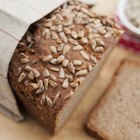
Russian Rye Bread vs. Pumpernickel
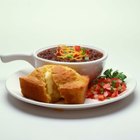
How to Make Cornbread in a Cast-Iron ...
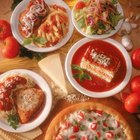
A Substitute for Eggs in Chicken ...

How to Freeze Brioche

How to Get Pizza Crust to Brown

Can I Bread Pork Chops With Pancake Mix?

How to Get an Oily Stain Off a Leather ...

List of Cuban Foods

Can I Deep-Fry the Food the Night ...

What Is the Difference Between a Bagel ...
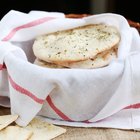
How to Make Egyptian Bread the Egyptian ...

Is Teff Flour Gluten-Free?

How to Make Bread Chewy

How Many Calories in Gluten-Free Bread?
References
Writer Bio
Irena Eaves began writing professionally in 2005. She has been published on several websites including RedPlum, CollegeDegreeReport.com and AutoInsuranceTips.com. Eaves holds a Bachelor of Science in journalism from Boston University.